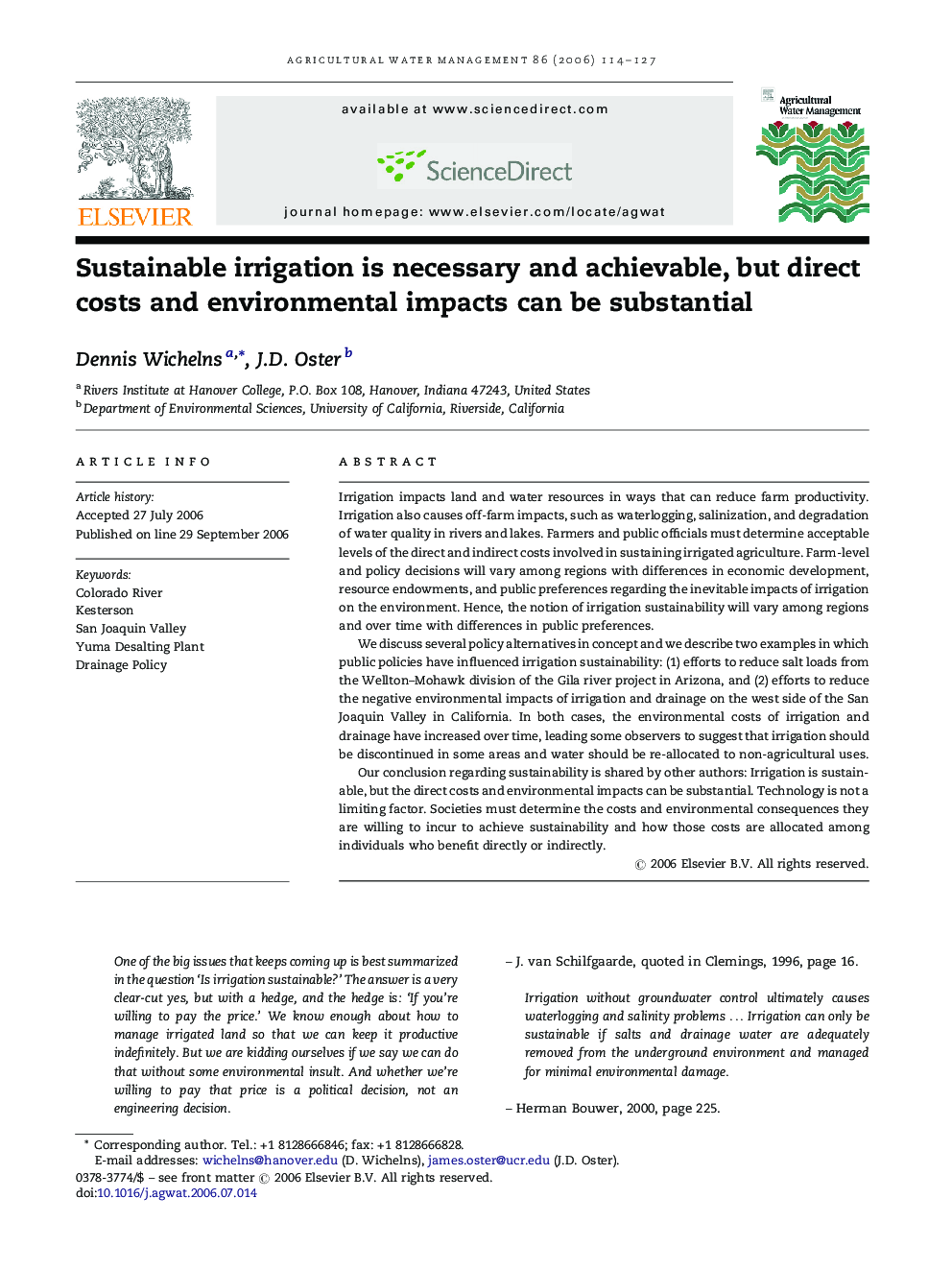| Article ID | Journal | Published Year | Pages | File Type |
|---|---|---|---|---|
| 4480140 | Agricultural Water Management | 2006 | 14 Pages |
Irrigation impacts land and water resources in ways that can reduce farm productivity. Irrigation also causes off-farm impacts, such as waterlogging, salinization, and degradation of water quality in rivers and lakes. Farmers and public officials must determine acceptable levels of the direct and indirect costs involved in sustaining irrigated agriculture. Farm-level and policy decisions will vary among regions with differences in economic development, resource endowments, and public preferences regarding the inevitable impacts of irrigation on the environment. Hence, the notion of irrigation sustainability will vary among regions and over time with differences in public preferences.We discuss several policy alternatives in concept and we describe two examples in which public policies have influenced irrigation sustainability: (1) efforts to reduce salt loads from the Wellton–Mohawk division of the Gila river project in Arizona, and (2) efforts to reduce the negative environmental impacts of irrigation and drainage on the west side of the San Joaquin Valley in California. In both cases, the environmental costs of irrigation and drainage have increased over time, leading some observers to suggest that irrigation should be discontinued in some areas and water should be re-allocated to non-agricultural uses.Our conclusion regarding sustainability is shared by other authors: Irrigation is sustainable, but the direct costs and environmental impacts can be substantial. Technology is not a limiting factor. Societies must determine the costs and environmental consequences they are willing to incur to achieve sustainability and how those costs are allocated among individuals who benefit directly or indirectly.
